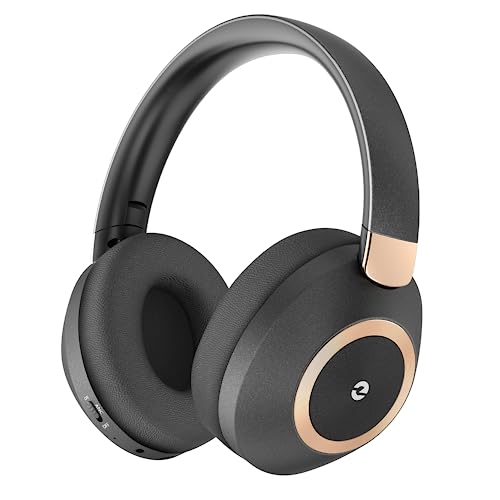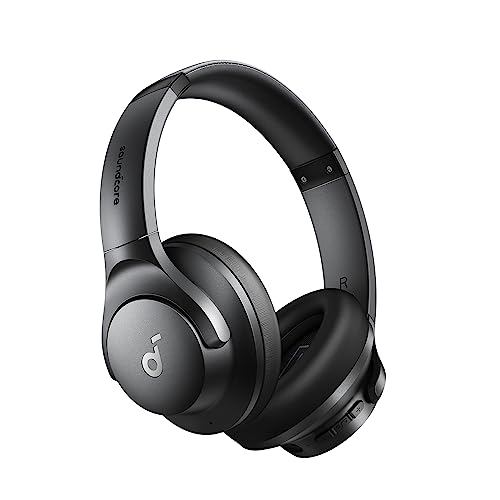This Is The Over Ear Headphones Noise Cancelling Case Study You'll Nev…
페이지 정보
작성자Tina 댓글댓글 0건 조회조회 47회 작성일 24-02-19 07:25본문
 How Noise Cancelling Headphones Improve Your Listening Experience
How Noise Cancelling Headphones Improve Your Listening Experience Noise-canceling headsets create a barrier between your ears and the background noise. They're great for airplane rides and daily commutes but can help you be more productive at work or the comfort of your home office.
Noise-canceling headsets create a barrier between your ears and the background noise. They're great for airplane rides and daily commutes but can help you be more productive at work or the comfort of your home office.They use internal mics to listen for ambient sounds and later electronically produce anti-sound waves. This technology is most effective with low, harmonic noises like jet engines or fan, but is not able to handle loud or irregular office noises as well as higher frequencies.
How It Works
The eardrums of your ears are vibrated by sound waves and produce the sound you hear. Noise cancelling headphones operate by the emission of a sound that is 180 degrees off-phase with the sound, effectively canceling it out. They also make use of electronic devices to create a separate listening space so that you can truly enjoy your music.
There are two kinds of headphones that have active noise cancellation technology: adaptive and passive. Passive noise cancellation uses padding to muffle outside sounds, while adaptive technology adapts digitally to the environment. Adaptive noise cancellation is more advanced than passive noise cancelling and provides a variety of listening options to let you control the amount of external noise you want to hear.
With ANC, miniature microphones located in earcups and earbuds record the audio you listen to as well as any ambient sound you're in contact with. The ANC chipset analyzes the frequencies of sound signals that are coming in and then creates an inverted sound signal that cancels the original sound waves. Imagine it as a sound version of the anti-ballistic missiles seen in war movies.
You may notice an interruption in the time between turning on ANC and observing its effects. This is the time for the ANC to hear the ambient sound, process it and create its anti-sound wave. Higher-frequency waves are harder to counter than lower-frequency waves, and they are particularly difficult to reverse once they reach your ears.
While ANC is generally safe however, certain users have reported dizziness or vertigo while wearing headphones with this technology, and it's not known why this occurs. One theory is that the low-frequency noises cancelled by ANC trick your brain into thinking that there's an increase in air pressure similar to the discomfort some people feel when flying on airplanes.
The extra electronics in ANC can also cause discomfort, as they can strain your battery. It is a good idea, therefore, to always bring an additional set of batteries with you and only wear them when necessary. This also helps to lessen the risk of hearing loss due to long-term use of headphones with this feature.
Why it's important
Noise-canceling headsets form an sonic barrier between you and the outside world. You only hear music you select. They use microphones to pick up and analyze the sounds around you, and then electronically generate an inverse of those sound waves to block out. This eliminates background noise so that you can focus on your work, sleep on a plane or train, or just relax at your home.
The best headphones for over ear headphones noise cancelling (advicebookmarks.com)-ear use noise cancelling are designed to provide high-quality audio so that you can enjoy your favourite music or podcasts. This means that the bass, vocals, and other aspects of your audio or music are crystal clear. This is an excellent way to improve the enjoyment of listening, regardless of whether you are an avid classical music lover or a basshead. You'll be able hear the lyrics of your tunes more clearly and take note of the intricate details that comprise the melody and the harmony.
A good night's sleep is essential to your well-being and health, but many people struggle to sleep due to noises outside. Over-ear headphones that have noise cancellation can help get a good night's rest so that you can wake up refreshed and ready to take on the day.
Passive and active noise cancellation technologies are becoming increasingly well-known in wireless headphones. They typically have the earcups that wrap around the ears, which creates a seal that blocks out any unwanted sounds. They typically employ noise-canceling algorithms to cut down on the amount of ambient sound you can hear, and they feature high-quality audio codecs to ensure that your music or other audio is clear and crisp.
In addition to noise cancellation, some headphones also provide an option to block out ambient noise so that you can be aware of your surroundings without having to remove your headphones. This is ideal for those who commute, or anyone who wants to listen to their surroundings.
The Monoprice BT600ANC are a pair of low-cost over-ear headphones featuring ANC and ambient-awareness modes. They're lightweight, comfortable to wear for extended periods, and Over Ear Headphones Noise Cancelling have a superb audio quality that will please most listeners. Although they don't have the same clarity in mid and high frequencies, they're still a great option for the cost.
How do you choose the best headphones
When selecting a pair of headphones, there are many aspects to consider. There are plenty of options available regardless of whether you're looking for a low-cost option such as the Monoprice's BT600ANC or a more expensive model that has high-quality audio codes. It's important to choose headphones that are suitable for your needs, both in terms of comfort and functionality. The best noise cancelling over ear headphones headphones will enhance your listening experience, whether in the car or at the office.
The most important aspect to take into consideration when selecting a new pair of noise cancelling headphones is whether you prefer passive or active noise cancellation. Passive noise isolation uses the physical structure of the headphones to form a seal around your ears and mute the background sound. This usually reduces mid- to high-frequency sounds by as much as 30 decibels.
Active noise cancellation goes a step above passive noise cancellation. It emits a low-level noise that cancels external noise. This is achieved by using microphones to monitor the frequencies of noise, and then generating the exact frequencies in reverse, which block them before they reach your ears. This method is more expensive, however, it is also more effective than passive noise isolation.
In addition to choosing between active and passive noise cancellation, there are other factors to take into consideration, such as comfort and design. You'll need to ensure that the headband is comfortable and does not place pressure on your neck or head. You should also make certain that the earcups fit snugly over the ear headphones wireless noise cancelling your ears and don't feel too tight or uncomfortable.
You'll also want to ensure that your headphones feature high-quality drivers and good audio performance. The driver is the element that converts an electrical signal into sound pressure, and it's measured in millimeters. Larger drivers are better for bass performance.
There are many inexpensive headphones that claim to have noise cancellation. However, it's worth investing a bit more for a pair of headphones that can provide an experience that is truly immersive. There are plenty of excellent choices to choose from. Some of the top include the Bose QC35 and Sony WH1000XM5. Both have top-quality audio quality with outstanding noise cancellation and a comfortable design.
Final Words
When choosing a pair of headphones, take into consideration other features. For instance the size of ears and their cupping style determines the extent to which they can shield your ears from noise outside. Smaller earcups could leak sound, causing disturbance to those around you.
The design of the earcups can also influence other aspects of headphone performance, such as frequency response and total distortion. Although these aspects aren't directly related to sound quality, their effect is often an effect of the physics involved in the design of each pair of headphones.
Headphones with a wide and flat frequency response can give more natural and immersive experience. On the other hand, headphones with narrow frequency ranges might feel more confined and artificial.
The type of music that you listen to can influence your headphone choice. Stereo music that is standard will work nicely on either over-ear or on-ear headphones. Video games require great audio signals for them to function effectively and some players prefer in-ear models due to this.
댓글목록
등록된 댓글이 없습니다.
